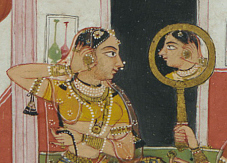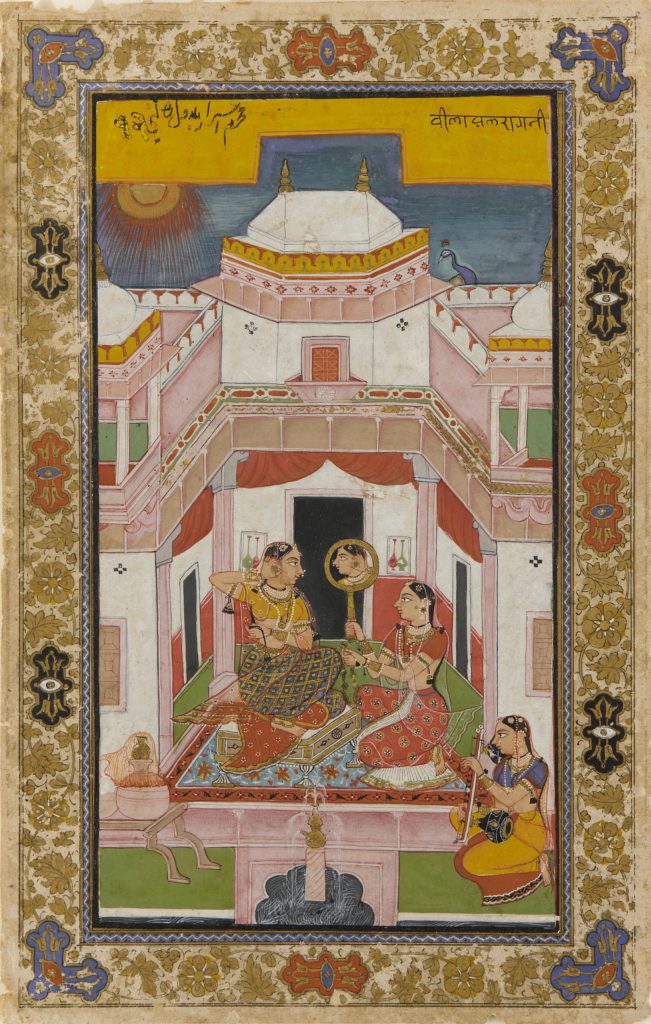Vilaval Ragini
Vilaval Ragini
India, Rajasthan, Bundi, ca. 1680
Opaque watercolor and gold on paper
Courtesy the Freer Gallery of Art, Smithsonian Institution, Washington, D.C.: Purchase — Charles Lang Freer Endowment, F1990.10
The Vilaval Ragini has an exquisite and elaborately decorated border. Carefully traced lines of gold foliage with a symmetrical overlay of tassels that superimpose the graceful patterns. Between this border and the scene in the painting there is also another border with a jagged blue line that gives the main border depth and pulls the viewer in by complimenting the symmetry of the palace and the equally weighted background and foreground. The symmetry of the work as a whole suggests that the two figures sitting next to each other are important. At the bottom of the Vilaval Ragini, a multi-headed waterspout splashes water, each splash indicated by lines thinner than a strand of hair. Here we can see the result of the precise expertise and handiwork that makes Indian court painting special. A seated musician in the corner holds a sitar adorned with compact details that make the instrument as beautiful to see as it presumably sounds. Above a shy peacock listens along.

The transparent cloth seen in this painting was exceptionally expensive, and is, therefore, fitting for the elite and refined figures in this scene.
Perhaps one of the most spectacular details is the mathematical accuracy of the designs on the women’s skirts. The textiles are embellished with lines that are as thin as the spouting water below. Thin, transparent folds of fabric were captured by the artist’s masterful techniques. They flow gently in the wind next to the figures. Curiously, the sun in the corner of the scene has a circle inside of a circle, a similar convention was used to indicate the moon seen in the Kedar Ragini.
When we compare the Vilaval Ragini to the Gunakali Ragini we can appreciate how much time and careful planning it takes to create a ragamala painting.

The mirror reveals the carefully rendered details of the woman’s face, including a small nose ring. The artist left no detail unpainted. The mirror here brings the viewer’s attention back to the woman who is inspecting herself while she gets ready.
